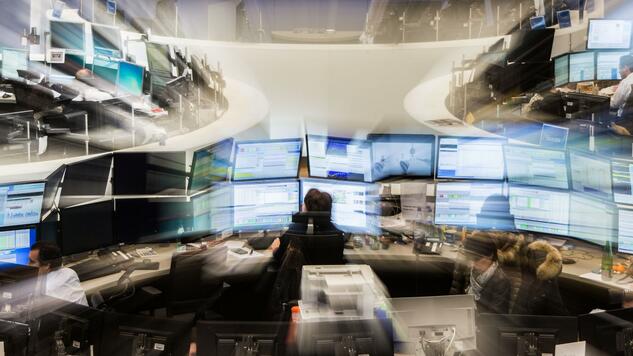
Rumours around an upcoming end to China’s zero-Covid policy dominated price action on Friday, overshadowing nonfarm payrolls. Optimism around Chinese reopening led a sharp move higher in the CNH, which flowed through to an almost 3% appreciation in the NZD and AUD, while commodities surged (copper +7%) alongside other risk assets. However, we should see an abrupt reversal today after Chinese officials quashed these rumours over the weekend, doubling down on the zero-Covid policy. Payrolls was a mixed bag, with stronger employment growth but a higher-than-expected unemployment rate. The market pared Fed rate hike pricing and the USD fell sharply, but the US 10-year was little changed, at around 4.15%. The key focus this week is US CPI data on Thursday night.
Speculation around China possibly stepping away from its zero-Covid policy helped drive market moves on Friday. Rumours had been circulating earlier in the week but stepped up a notch on Friday after a former senior official at China’s Centre for Disease Control reportedly told a Citi conference that China would reopen to Hong Kong early next year, progressively followed by other countries. Adding weight to the rumours, Bloomberg reported that China was looking at dropping penalties for airlines which carried Covid-positive passengers while German Chancellor Scholz, fresh from meeting President Xi, announced that the Pfizer-BioNTech mRNA vaccine would be made available to expats living in China. China has chosen not to use mRNA vaccines to this point, instead relying on its domestic vaccines which are seen as offering less protection. Scholz said he hoped this would be the “first step” towards broader availability of the vaccine in the country.
Optimism around China reopening was visible in a huge 2% appreciation in the CNH, big rallies in the Hang Seng (+5.4%) and China’s CSI300 equity index (+3.3%), and a surge in commodity prices. Copper was up more than 7%, its biggest one-day increase since January 2009, while Brent crude oil increased over 4%. Persistent concerns around China’s growth outlook, amidst the zero-Covid strategy and downturn in the property sector, have weighed on industrial commodities for months.
We should see a material reversal in these market moves today however, after Chinese officials doubled down on the zero-Covid policy over the weekend. The National Health Commission said it would “unswervingly” stick by its current Covid approach, while a senior official called China’s approach “completely correct, as well as the most economical and effective.”
Turning back to developments on Friday, the risk-on sentiment related to the China zero-Covid rumours was reinforced by the nonfarm payrolls report, which showed still-strong employment growth (261k in October) but a higher-than-expected unemployment rate, of 3.7%. Job growth continues to moderate from its breakneck pace earlier in the year (444k per month in the first half of the year), consistent with recent high-profile announcements around hiring freezes at the likes of Apple and Amazon, but the overall picture is still one of a very tight labour market overall. Average hourly earnings growth was slightly stronger than expected on the month, at 0.4% m/m. But the trend appears to be towards some moderation in wage growth, with average hourly earnings running at a 3.8% annualised pace over the past three months, well down on the 6% rate in the second half of 2021.
The market reaction to the payrolls report suggested investors saw it as justifying a slightly less aggressive rate path for the Fed. The market pared back expectations for the peak in the Fed cash rate, from around 5.15% to around 5.10%, helping to drive a 6bps fall in the US 2-year rate, albeit from what was a post-GFC high. The yield curve steepened on the day, with the US 10-year rate up 1bps, to 4.16%, and the 30-year rate up 7bps, consistent with investors seeing a somewhat less negative outlook for economic growth (likely influenced by the China rumours). That said, at -50bps, the US 2y10y yield curve remains near its most inverted since the early 1980s and consistent with recession next year. The key next test for the market comes with the all-important CPI release later this week.
Bigger moves were seen in currencies, with the BBDXY USD index experiencing its biggest daily decline since March 2020, a massive 1.7% fall. The USD was already on the back foot before payrolls, amidst the broad-based improvement in risk appetite, but its losses accelerated after the data, as Fed rate hike expectations were pared back. The BBDXY ended the week lower than where it was before the FOMC meeting, at which Powell outlined a higher-for-longer interest rate outlook.
The EUR was up more than 2% on Friday, approaching parity with the USD again, while the NZD and AUD were almost 3% higher, helped by the surge in the CNH and broader optimism around China. It was the biggest daily percentage increase in the NZD since June 2010. The NZD ended the week at around 0.5930, its highest closing level in more than six weeks, while the AUD finished at 0.6470. The CAD was 2% higher on Friday, helped by a robust Canadian labour market report which showed much stronger-than-expected job growth (108k vs. 10k expected) and a lower-than-expected unemployment rate, a warning that the Bank of Canada might have more work to do with its tightening cycle.
On the week, the NZD was the top performing currency, up by more than 2%, helped by the tailwind of a stronger CNY (which was 0.9% stronger). The NZD outperformed the AUD on the week, with the RBA’s cautious approach to tightening policy (another 25bps rate hike last week) contrasting with a very strong NZ employment report, which solidified expectations for a 75bps RBNZ hike later this month. The GBP was by far the weakest currency on the week, down over 2%, reflecting the Bank of England’s dovish messaging at its monetary policy meeting, with Governor Bailey saying the Bank thought the market was overpricing the likely extent of tightening.
Equity markets were higher on Friday, helped by the optimism around China and the pullback in Fed rate expectations. The S&P500 and NASDAQ were both 1.4% higher, while the EuroStoxx 600 was up almost 2%.
Fed officials were out in force on Friday, reiterating Powell’s message from the FOMC meeting earlier in the week that the Fed is likely to step down to a 50bps hike in December but the end point for the tightening cycle is likely to be higher than what was set out in the September ‘dot plot’. Richmond Fed President Barkin said it was “entirely conceivable” the Fed would need to take the cash rate above 5% while Minnneapolis President Kashkari, a known hawk, said he was now looking at a higher interest rate forecast than his previous 4.9% expectation. Kashkari added that the payrolls report showed job growth remained “quite healthy” and there was “more work to do” for the Fed. New Boston President Collins said “smaller increments will often be appropriate” in upcoming meetings, endorsing a likely shift down to a 50bps hike next month. Meanwhile, influential former Treasury Secretary Larry Summers, who predicted in early 2021 that the excessive fiscal stimulus would lead to a surge in inflation, said he saw the risk the Fed would ultimately need to take the cash rate above 6%.
NZ rates were lower on Friday, following the lead of Australian rates rather than the US. Swap rates were down by 4bps across the curve, with the 2-year rate easing back to 5.16%. NZGB yields underperformed again, with the 10-year yield up 1bp on the day, at 4.54%. The 10-year swap spread – the difference between the 10-year swap and bond rates – has collapsed from around 45bps on Monday, when NZGBs joined the WGBI bond index, to just 21bps at the end of the week.
It should be a quiet session ahead, with just European industrial production (never a market mover) and ECB President Lagarde speaking. The main event this week is the US CPI data released on Thursday night. The market is looking for a tick down in the monthly rate of core inflation to 0.5% m/m, although, at 6% annualised, such a reading would still be much too high for comfort for the Fed. A downside surprise to core inflation is likely to catalyse a broad-based rally in risk assets and a material correction lower in bond yields, as investors may see it as the start of the long-awaited normalisation in inflation. An upside surprise is likely to see higher rates, a flatter US curve, a stronger USD, and renewed pressure on risk assets. The November US mid-term elections are on Tuesday night, with Republicans set to gain both the House and Senate according to polls and betting markets, likely setting up two years of political gridlock ahead.





We welcome your comments below. If you are not already registered, please register to comment.
Remember we welcome robust, respectful and insightful debate. We don't welcome abusive or defamatory comments and will de-register those repeatedly making such comments. Our current comment policy is here.